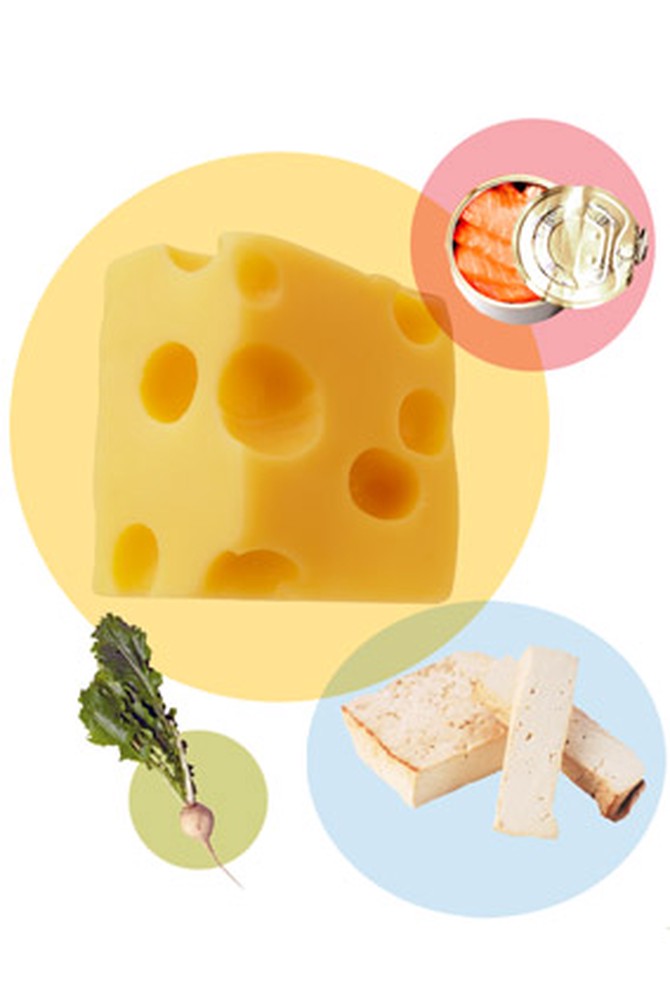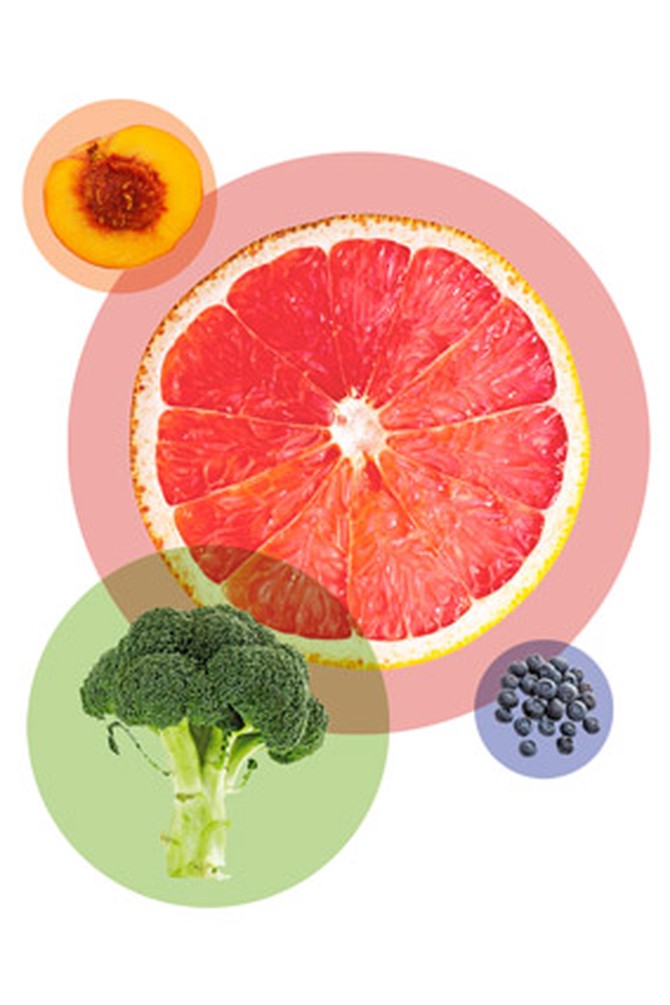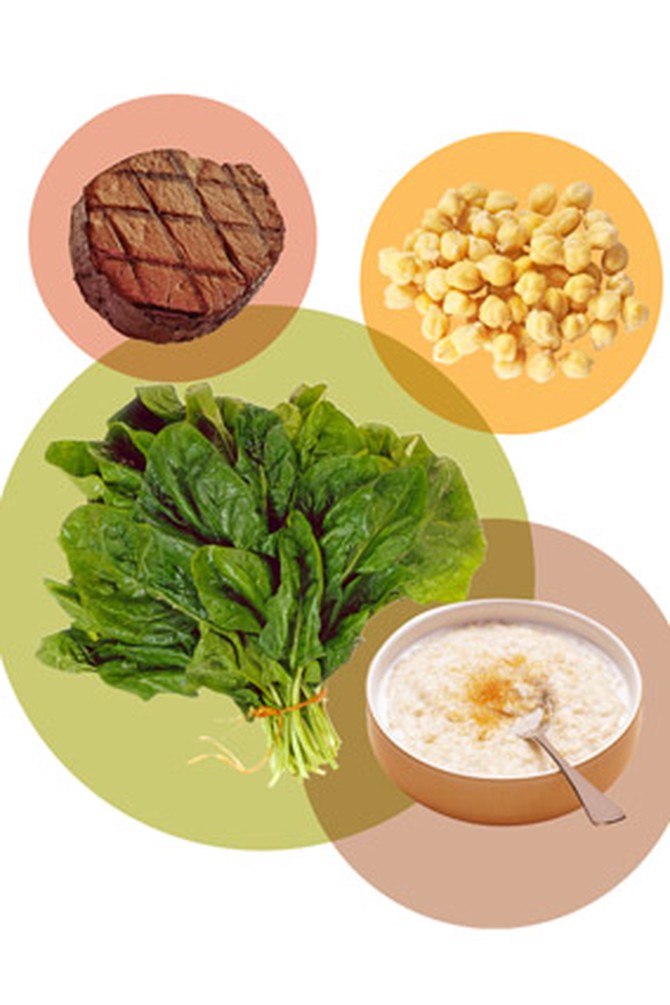4 Ways to Get Nutrients from Your Food (Instead of a Pill)
A guide to getting your nutrition from real food rather than a handful of capsules.
By Emma Haak

Photo: Getty Images
Supplements are one way to consume vitamins and minerals, but nutrients from your plate typically trump the stuff in a pill. That's because whole foods are so much more complex, providing an array of micronutrients (and other healthy substances) that your body also needs to function well, says dietitian Maria Bella, founder of Top Balance Nutrition in New York. (Consider strawberries: Beyond vitamin C, they contain potassium, manganese, copper, folate, magnesium, zinc, niacin, and vitamin K.) All those compounds work synergistically, providing more benefits together than they would separately in capsules. And of course, as Bella points out, eating real food is just more fun. But what does it take to meet your daily quotas through your diet? We've done the math for four essential nutrients.
Ninety-nine percent of the calcium in our bodies is stored in the bones and teeth," says nutritionist Jonny Bowden, PhD, author of The 150 Healthiest Foods on Earth. Calcium plays a major role in preventing osteoporosis, but it also helps with nerve signaling, muscle contraction, and the secretion of hormones and enzymes. Though dairy products have the highest absorbable calcium content per serving, you don't have to rely on dairy alone to get your recommended daily allowance (RDA).
100% of your RDA of calcium:
Calcium
Ninety-nine percent of the calcium in our bodies is stored in the bones and teeth," says nutritionist Jonny Bowden, PhD, author of The 150 Healthiest Foods on Earth. Calcium plays a major role in preventing osteoporosis, but it also helps with nerve signaling, muscle contraction, and the secretion of hormones and enzymes. Though dairy products have the highest absorbable calcium content per serving, you don't have to rely on dairy alone to get your recommended daily allowance (RDA).
100% of your RDA of calcium:
- ½ cup cooked turnip greens OR ½ cup cooked kale (about 10 percent)
- ⅔ cup firm tofu OR 1 cup low-fat macaroni and cheese (about 30 percent)
- 8 dice-size cubes Swiss cheese OR 1 cup plain nonfat yogurt (about 40 percent)
- 3 ounces canned pink salmon OR 4 teaspoons roasted sesame seeds (about 20 percent)

Photo: Getty Images
Vitamin C
Vitamin C fights free-radical damage to our cells and DNA, helps with tissue synthesis and wound healing, may boost HDL cholesterol (the good kind), aids in bone growth, and enhances the body's absorption of iron. (Bella suggests pairing your C-rich foods with good iron sources to get the most benefit from both nutrients.) Citrus fruits like oranges and grapefruits are especially high in C, but plenty of vegetables, like kale and broccoli, and other fruits, like apricots and peaches, can help you reach the recommended 75 milligrams a day.
100% of your RDA of vitamin C:
100% of your RDA of vitamin C:
- ½ pink grapefruit OR 9 small strawberries (about 51 percent)
- 1 medium peach OR 1 Asian pear (about 13 percent)
- ½ cup blueberries OR 2 apricots (about 9 percent)
- 1 spear of cooked broccoli OR 1 boiled sweet potato (about 27 percent)

Photo: Getty Images
Iron
Iron is a critical component of hemoglobin, a protein in red blood cells that carries the oxygen our cells need to produce energy. Too little iron can leave us feeling weak and fatigued, and looking pale, Bowden says. Premenopausal women need to be especially careful about meeting their RDA, as their levels are depleted each month during menstruation. A plate of beef liver will do the trick—but fortunately, there are other options: many leafy greens, various types of beans, and other cuts of beef. (Postmenopausal women need much less iron than other women—only 8 milligrams, or about 44 percent of the RDA outlined here.)
100% of your RDA of iron:
100% of your RDA of iron:
- About ⅔ cup cooked chickpeas OR ½ cup canned white beans (about 22 percent)
- 3 ounces flank steak OR 1 veggie burger patty OR ½ cup firm tofu (about 17 percent)
- ½ cup Cream of Wheat OR ½ cup instant oatmeal (about 28 percent)
- 2 cups raw spinach OR 1½ cups Swiss chard (about 33 percent)

Photo: Getty Images
Omega-3 Fatty Acids
Omega-3s can do wonders for your heart, from lowering your blood pressure to helping prevent hardening of the arteries. They may also keep your skin healthy, your memory sharp, and your mood positive (Bella recommends omega-3-rich foods to clients with signs of depression). While fish are one of the best dietary sources of omega-3s, they can also contain mercury, which means daily consumption is generally not a good idea. (The FDA warns women who are or might get pregnant against eating more than 12 ounces of low-mercury fish a week). But it's still possible to satisfy your adequate intake (AI)—1.1 grams a day—by eating certain seeds, nuts, and greens.
100% of your RDA of omega-3s:
100% of your RDA of omega-3s:
- 1.5 ounces canned sardines OR 4.5 ounces catfish OR 1¼ teaspoons ground flaxseed (about 60 percent)
- ½ cup edamame OR 1 ounce dry-roasted pecans (about 25 percent)
- 1 cup cooked spinach OR 1 cup cooked collard greens (about 15 percent)
Next: 4 easy-to-find superfoods that won't break the bank
From the April 2012 issue of O, The Oprah Magazine

